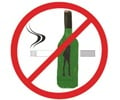In this study, alcohol use disorder prevalence of about 41 percentage was observed in American Indians and Alaska natives.

‘In the study, they also found that among American Indians and Alaska Natives (AIAN) with alcohol use disorder, only 34% sought alcohol-related treatment -- and that men from ages 35-64 were the most likely to seek treatment.’





A new study from researchers from the University of North Carolina at Chapter Hill in the Gillings School of Global Public Health and the Prevention Research Center of the Pacific Institute for Research and Evaluation in Berkeley, California, examines the proportions of AIAN who seek treatment for lifetime alcohol use disorder and the characteristics associated with those who seek treatment. The study was funded by the National Institute on Alcohol Abuse and Alcoholism, of the National Institutes of Health.The results of the study show that among AIAN with lifetime alcohol use disorder, 34% sought alcohol-related treatment -- and that men from ages 35-64 were the most likely AIAN to seek treatment. Further, among people with lifetime alcohol use disorder, a fifth of Non-Hispanic Whites (20.5%) reported seeking alcohol-related help or treatment.
Study coauthor Roland Moore notes that because engaging in formal alcohol treatment, traditional healing or self-help treatment improves treatment outcomes, it is important for more people experiencing alcohol use disorder to seek some form of help or treatment if they do not stop hazardous drinking on their own. This study sheds light on the correlates of alcohol-related treatment and can inform more effective treatment promotion efforts with this population.
Source-Eurekalert















